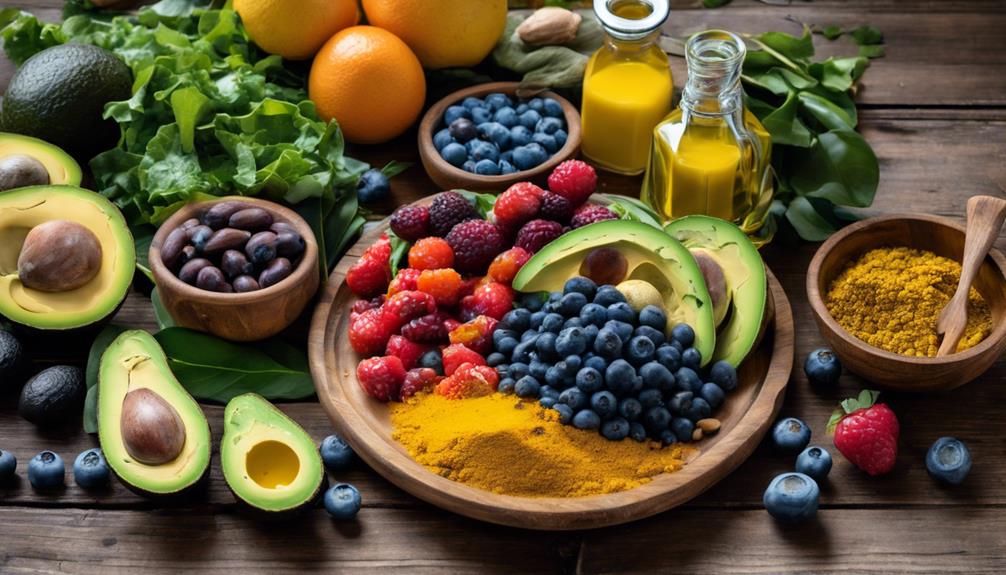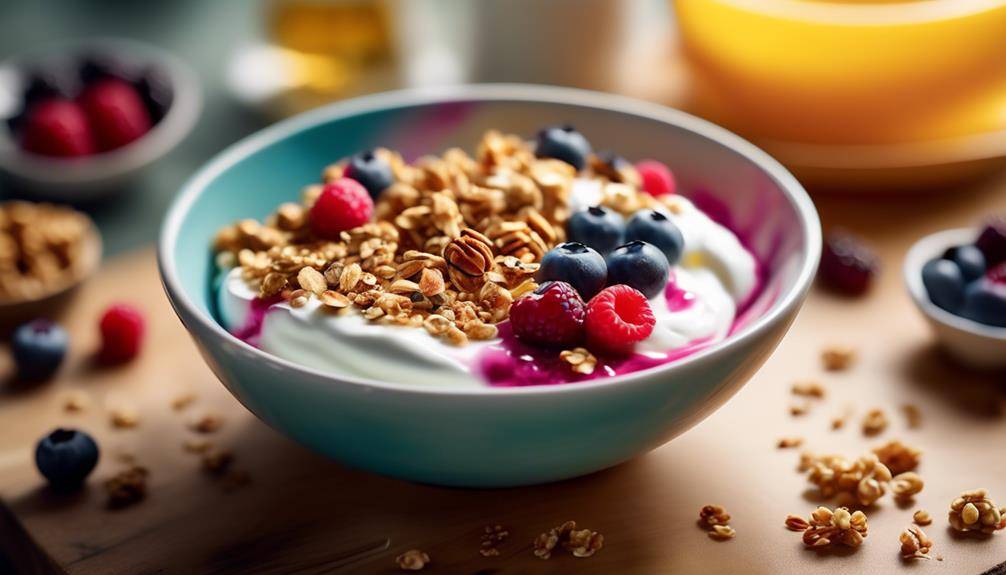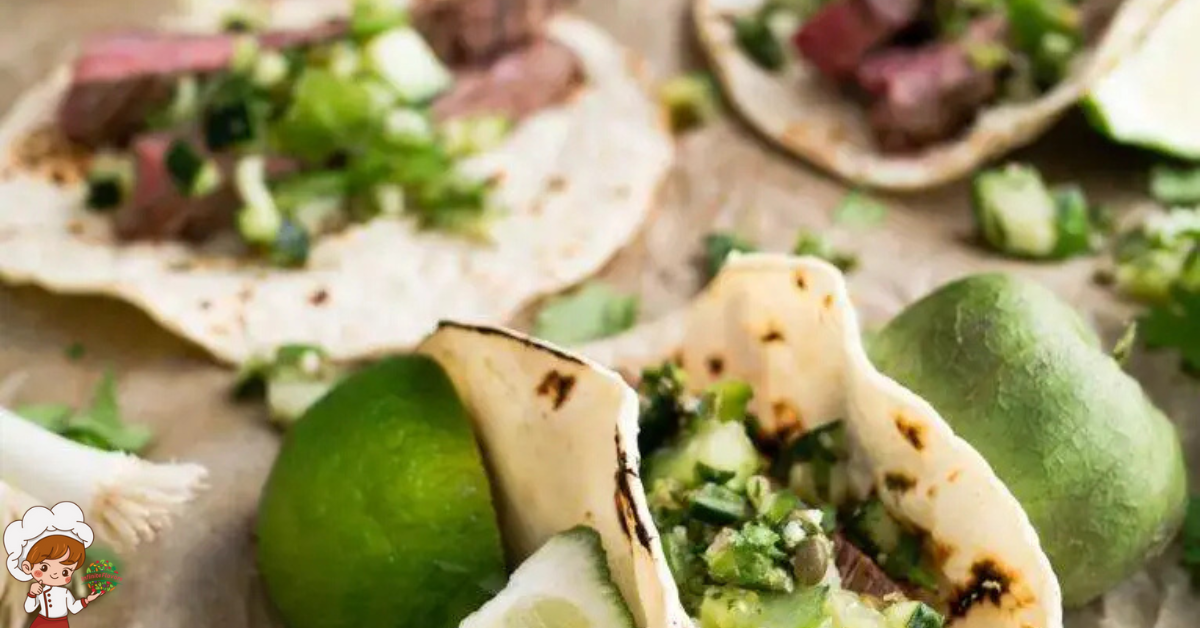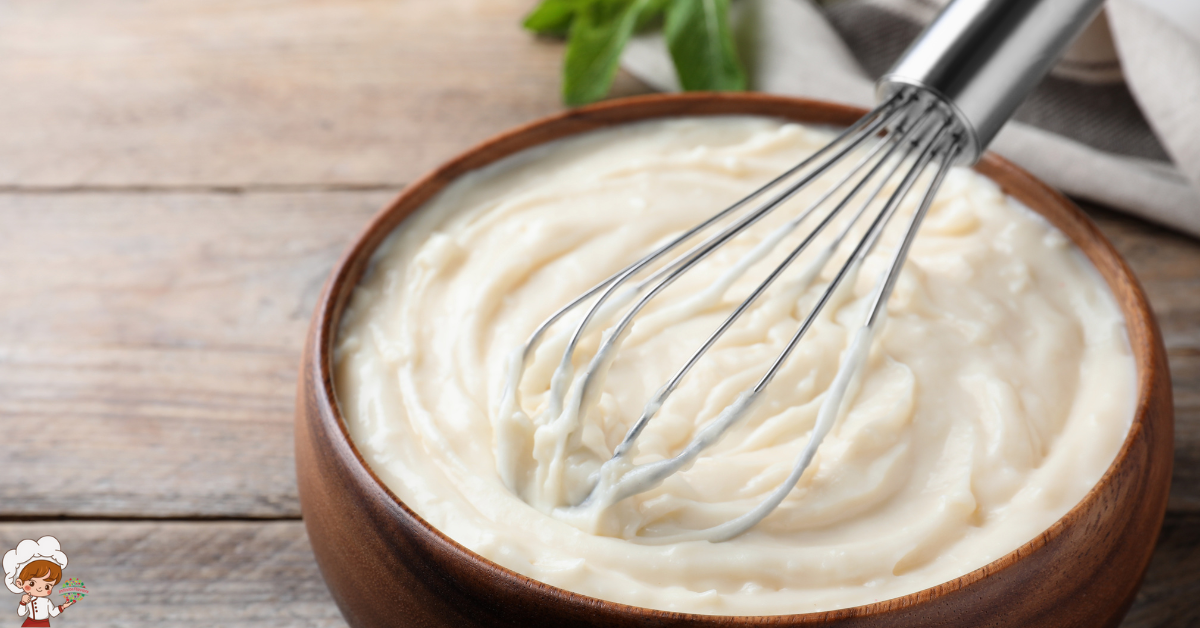Easy To Follow Anti-Inflammatory Diet

An Easy To Follow Anti-Inflammatory Diet focuses on fresh, whole foods that help combat inflammation. You’ll want to load up on vibrant fruits and vegetables, whole grains like quinoa, and healthy fats from avocados and olive oil. Incorporate lean proteins, especially fatty fish rich in omega-3s, and embrace spices like turmeric and ginger. Avoid processed sugars, trans fats, and refined grains, which can trigger inflammation. Meal prep and plan your weeks around these foods to make it easier. If you’re curious about meal ideas and detailed planning tips, there’s plenty more to explore.
Understanding Inflammation
Inflammation, both in response to injury and as a natural part of your immune system, plays an essential role in your overall health. When you experience acute inflammation, it’s your body’s way of signaling that something needs attention, like healing a cut or fighting off an infection. However, if inflammation becomes chronic, it can lead to various health issues, including autoimmune diseases and metabolic disorders.
Understanding the inflammatory response is fundamental. It’s influenced by several inflammation triggers, such as poor diet, lack of exercise, and high-stress levels. Incorporating dietary antioxidants, like those found in fruits and vegetables, can help counteract inflammation. Omega-3 fatty acids, commonly found in fish and flaxseeds, are particularly effective in reducing inflammation, promoting gut health, and supporting your immune system.
Lifestyle factors also play a significant role in managing inflammation. Regular physical activity can enhance your immune response and reduce the likelihood of chronic inflammation. Stress management techniques, such as meditation or yoga, are essential too. When you keep stress levels in check, you’re less likely to experience prolonged inflammatory responses.
Key Principles of the Diet
To effectively embrace an anti-inflammatory diet, you’ll want to focus on whole foods that nourish your body. This means prioritizing fresh fruits, vegetables, whole grains, and healthy fats while balancing your nutrient intake. By making these choices, you can reduce inflammation and support overall well-being.
Whole Foods Focus
Emphasizing whole foods is a cornerstone of the anti-inflammatory diet, guiding you toward nutrient-dense options that nourish your body. By focusing on whole grains, you’re not only boosting your fiber intake but also getting essential nutrients that help reduce inflammation. Incorporate a variety of plant proteins like beans, lentils, and nuts, which provide significant amino acids without the inflammatory effects of some animal proteins.
Healthy fats play an essential role too. Opt for sources like avocados, olive oil, and fatty fish, rich in omega-3s, to support your body’s defenses. Don’t forget to fill your plate with colorful vegetables and antioxidant-rich fruits, as they offer a wealth of vitamins and minerals that combat inflammation.
Incorporating fermented foods like yogurt and sauerkraut can also enhance gut health, further aiding in the fight against inflammation. When it comes to cooking methods, choose steaming, grilling, or baking over frying to preserve nutrients. Finally, plan your meal prep around seasonal produce, ensuring you enjoy the freshest ingredients while maximizing flavor and nutritional benefits. With these whole food choices, you’ll be well on your way to a healthier lifestyle.
Balanced Nutrient Intake
Achieving a balanced nutrient intake is essential for maximizing the benefits of an anti-inflammatory diet. To do this effectively, you need to focus on nutrient diversity. This means incorporating a wide range of foods, including fruits, vegetables, whole grains, lean proteins, and healthy fats. Each food group offers unique nutrients that work together to reduce inflammation and support overall health.
Don’t forget about portion control, too. Even healthy foods can contribute to inflammation if consumed in excess. By paying attention to serving sizes, you’ll not only maintain a healthy weight but also guarantee that your body receives the right amount of nutrients without overwhelming it.
Aim for colorful plates filled with a variety of ingredients. For example, include leafy greens like spinach, vibrant berries, and oily fish like salmon. These choices provide antioxidants, omega-3 fatty acids, and other anti-inflammatory compounds. Remember, balance is key. It’s not just about eating less or more; it’s about finding the right proportions of each nutrient to nourish your body effectively. With a mindful approach to nutrient diversity and portion control, you can create meals that truly support your anti-inflammatory goals.
Foods to Embrace
Adopting an anti-inflammatory diet means embracing a variety of nutrient-rich foods that can help reduce inflammation in your body. Start by including vibrant fruits and vegetables in your meals. Leafy greens like spinach and kale are packed with antioxidants, while berries like blueberries and strawberries are known for their anti-inflammatory properties.
Incorporate whole grains such as quinoa, brown rice, and oats, which provide essential fiber and nutrients. When it comes to protein, focus on lean sources like fish—especially fatty fish like salmon and mackerel, which are rich in omega-3 fatty acids. You can also choose legumes and nuts for a plant-based protein boost that’s easy on your body.
Don’t forget to add in healthy fats! Avocado and olive oil not only taste great but also support overall health. As you explore flavors, make sure to embrace anti-inflammatory spices like turmeric and ginger. These spices can easily elevate your dishes while providing powerful health benefits.
For those times you need a quick pick-me-up, reach for nutrient-dense snacks. Almonds, walnuts, or a small serving of yogurt topped with fresh fruit can keep your energy levels stable while fighting inflammation.
Foods to Avoid
To effectively combat inflammation, it’s crucial to identify and limit certain foods that can exacerbate the problem. Start by cutting out processed sugars, which are known to spike your blood sugar levels and trigger inflammatory responses. Instead of reaching for those sugary snacks, consider healthier alternatives.
Next, steer clear of trans fats found in many fried and processed foods. These unhealthy fats not only increase inflammation but also raise your risk of heart disease. Refined grains, like white bread and pasta, can also be inflammatory due to their lack of fiber and nutrients, so opt for whole grains when possible.
Be cautious with omega-6 oils, which are prevalent in many cooking oils and processed foods. While your body needs some omega-6s, an excess can lead to inflammation, especially if you’re not balancing it with omega-3s. Additionally, avoid artificial additives commonly found in packaged foods; these can disrupt your gut health and contribute to inflammation.
Limit your intake of excessive alcohol, as it can irritate your gut and lead to inflammation. High sodium foods, like processed snacks and canned soups, should also be on your avoidance list since they can cause water retention and increase blood pressure.
Lastly, if you’re sensitive to gluten, consider avoiding gluten products. Even if you’re not celiac, gluten can trigger inflammatory responses in some individuals. By steering clear of these foods, you’re taking a significant step toward reducing inflammation and improving your overall health.
Meal Planning Tips
When planning your meals, it’s important to focus on incorporating a variety of anti-inflammatory foods that support your health. Start by creating a weekly meal plan that highlights these foods, such as leafy greens, berries, fatty fish, nuts, and whole grains. This will help you stay organized and make healthier choices throughout the week.
Next, take your meal plan and use it to guide your grocery shopping. Make a detailed grocery list that includes all the ingredients you’ll need for your meals. Stick to the perimeter of the store where fresh produce, lean proteins, and whole foods are typically located. Avoid processed foods, which can contribute to inflammation.
Once you’ve got your groceries, it’s time for meal prep. Set aside a few hours each week to wash, chop, and cook your ingredients. You can batch-cook grains, roast vegetables, or grill proteins to save time during the week. Store your meals in clear, labeled containers so you can quickly grab them when you need a nutritious option.
Remember to incorporate snacks into your meal prep as well. Having healthy snacks on hand, like nuts or hummus with veggies, can help you avoid reaching for inflammatory options when hunger strikes. By planning your meals and prepping in advance, you’ll find it easier to stick to your anti-inflammatory diet and achieve your health goals.
Simple Recipes to Try
Now that you’ve got your meal planning down, let’s whip up some simple recipes to keep inflammation at bay. From quick breakfast ideas to hearty lunch options and delicious dinner recipes, you’ll find plenty of tasty ways to fuel your body. Get ready to enjoy flavorful dishes that nourish and satisfy!
Quick Breakfast Ideas
Starting your day with a quick, nutritious breakfast doesn’t have to be a hassle. Try making overnight oats the night before; just mix rolled oats with almond milk and your favorite fruits, then let it sit in the fridge. In the morning, grab and go! Smoothie bowls are another great option. Blend your favorite fruits with spinach and a scoop of Greek yogurt, then top with nuts and seeds for added crunch.
Chia pudding is simple too—combine chia seeds with coconut milk, let it thicken overnight, and enjoy it topped with fresh berries. If you’re craving something savory, whip up some avocado toast on whole grain bread, topped with a sprinkle of salt and pepper.
Quinoa porridge is a hearty alternative; cook quinoa in almond milk and add a dash of cinnamon and nut butter for flavor. Finally, fruit parfaits are quick to assemble—layer Greek yogurt with granola and seasonal fruits for a satisfying meal. With these easy breakfast ideas, you’ll kick off your day with energy and an anti-inflammatory boost!
Hearty Lunch Options
For a satisfying and nutritious lunch, consider whipping up a hearty grain bowl. Start with a base of quinoa or brown rice, then pile on your favorite roasted vegetables like sweet potatoes and bell peppers. Add a handful of greens, and finish it off with a drizzle of tahini or a splash of lemon juice for flavor.
If you’re in the mood for something warm, try a comforting lentil soup. Packed with protein and fiber, it’s a nourishing option that’ll keep you full throughout the afternoon. You can also experiment with Mediterranean dishes by combining chickpeas, cucumbers, and tomatoes for a revitalizing quinoa salad.
Feeling like a wrap? Stuff a whole grain tortilla with hummus, fresh veggies, and your choice of plant-based protein for a quick and easy meal. Whole grain sandwiches filled with avocado, spinach, and grilled veggies can also be a delightful choice.
Don’t forget about hearty veggie stews; they’re perfect for batch cooking and can provide you with several meals throughout the week. These protein-packed meals will fuel your body while keeping inflammation at bay!
Delicious Dinner Recipes
After enjoying a hearty lunch, it’s time to think about dinner options that are both nourishing and easy to prepare. You can whip up a delicious anti-inflammatory dinner using simple ingredients and effective cooking techniques.
Try a turmeric-spiced quinoa bowl. Cook quinoa, and then sauté a mix of bell peppers and spinach in olive oil. Add garlic and a pinch of turmeric to enhance the flavor and health benefits. Serve the veggies over the quinoa, and finish with a squeeze of lemon for brightness.
For another option, consider baked salmon with a herb crust. Mix fresh herbs like dill and parsley with a bit of olive oil, garlic, and lemon zest. Spread this mixture over salmon fillets and bake until flaky. Pair it with roasted sweet potatoes seasoned with cinnamon and black pepper.
Lastly, a chickpea stir-fry can be a quick and satisfying option. Use spices like cumin and coriander while stir-frying chickpeas with broccoli and carrots. These meals not only taste delicious but also incorporate beneficial spice pairings that support your anti-inflammatory lifestyle. Enjoy experimenting with these recipes!
Long-Term Lifestyle Changes
Embracing an anti-inflammatory diet often leads to lasting improvements in your overall health and well-being. To truly reap these benefits, it’s crucial to integrate sustainable choices into your daily routine. This means shifting your lifestyle habits to prioritize foods that combat inflammation, rather than just focusing on short-term dietary changes.
Start by incorporating a variety of colorful fruits and vegetables, whole grains, healthy fats, and lean proteins into your meals. These foods not only nourish your body but also help reduce inflammation over time. You’ll find that when you make these foods a staple in your diet, you’re less likely to reach for processed options that can trigger inflammation.
Additionally, consider your cooking methods. Opt for grilling, baking, or steaming instead of frying. These small adjustments can greatly impact your long-term health. Remember, it’s about making choices that you can maintain for years, not just weeks or months.
Don’t forget the importance of hydration. Drinking plenty of water and herbal teas can support your body in flushing out toxins and staying balanced.
Lastly, combine these dietary changes with other healthy lifestyle habits like regular exercise, adequate sleep, and stress management techniques. When you view these elements as interconnected, you’ll create a holistic approach to your health. Committing to these long-term lifestyle changes can not only reduce inflammation but also enhance your quality of life, helping you feel your best every day.
Frequently Asked Questions: Easy To Follow Anti-Inflammatory Diet
Can I Consume Alcohol on an Anti-Inflammatory Diet?
You can consume alcohol, but stick to moderation guidelines. Opt for types like red wine, which may offer some benefits, while limiting intake to one drink per day for women and two for men.
How Quickly Will I See Results From This Diet?
You’ll notice initial changes within a few weeks, like reduced inflammation and increased energy. For long-term benefits, stick with it consistently, and you’ll likely experience even greater improvements in your overall health over time.
Is This Diet Suitable for Children?
Yes, this diet can be suitable for children. You’ll find plenty of child-friendly options that adhere to nutritional guidelines, ensuring they receive essential nutrients while enjoying delicious meals that promote overall health and well-being.
Can I Combine This Diet With Other Dietary Plans?
Yes, you can combine this diet with other dietary plans. Just focus on meal planning and incorporate food substitutions that align with both diets, ensuring you maintain balanced nutrition and meet your specific health goals.
Are There Any Supplements Recommended for Inflammation?
For inflammation, consider turmeric benefits and omega-3 sources. Turmeric’s active compound, curcumin, reduces inflammation, while omega-3s from fish oil and flaxseed can help too. Always consult your doctor before starting any new supplements.
Conclusion
By adopting this easy-to-follow anti-inflammatory diet, you can take control of your health and reduce inflammation in your body. Embrace wholesome foods, avoid processed options, and plan your meals to make the shift seamless. As you experiment with simple recipes, you’ll discover that nourishing your body can be delicious and satisfying. Remember, making these long-term lifestyle changes isn’t just about the food; it’s about feeling better and living your best life every day.








